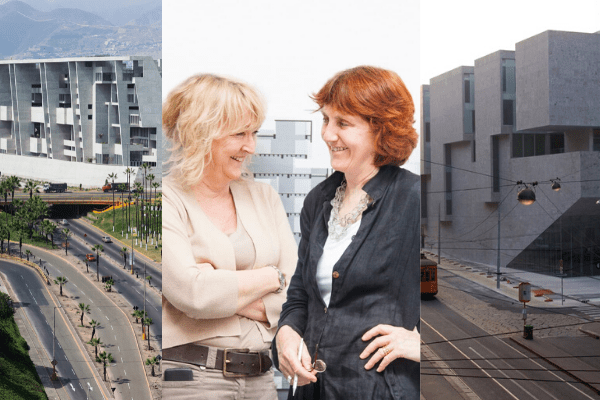Yvonne Farrell and Shelley McNamara of Dublin-based firm Grafton Architects were announced as joint winners of the Prize, which is now in its forty-first year. Farrell and McNamara founded their firm in their mid-twenties, after meeting at University College Dublin in 1974, and now head a staff of 38 architects and designers.
In a statement released after the announcement of their win, Farrell described architecture as “one of the most complex and important cultural activities on the planet. To be an architect is an enormous privilege. To win this prize is a wonderful endorsement of our belief in architecture. Thank you for this great honour.”
https://www.instagram.com/p/BN9lT6SgKbT/
Speaking to the NYTimes’ reporter Robin Pogrebin, Farrell added that her profession is a “silent language.”
“When people need something, they don’t just need a building that will keep the rain out. They need something we need to find expression for.” McNamara added that architecture “isn’t just about design and sophistication and accomplishment, but it’s also about how it makes you feel as a stranger.”
“We’re not afraid of monumentality and making important gestures when necessary, but we’re also not afraid to recede and be in the background,” she told Pogrebin.
“We think about a heroic space and at the same time think about how a human being feels in our space. We think about our agenda as being a humanist agenda, and that’s at the forefront.”
In an official statement, McNamara described winning the Prize as a “wonderful recognition of the ambition and vision of the clients who commissioned us and enabled us to bring our buildings to fruition.”
“Within the ethos of a practice such as ours, we have so often struggled to find space for the implementation of such values as humanism, craft, generosity, and cultural connection with each place and context within which we work.”
In 2016, Farrell spoke to the online architecture publication and community platform Archinect:
“It’s a hard graft to go from idea to reality,” she said. “We describe ourselves as translators of need into space. Every architect goes through this; you take the need and wish of strangers and you try to translate them into something both inventive and worthwhile.”
McNamara and Farrell share US$100,000 in prize money, a citation certificate, and a bronze medallion.
The jury, chaired by US Supreme Court Justice Stephen Breyer and comprising architects and academics, said the pair’s “integrity in their approach to both their buildings, as well as the way they conduct their practice,” secured their win. The jury also remarked on the firm’s “collaboration, unceasing commitment to excellence in architecture, responsible attitude toward the environment, and ability to be cosmopolitan while embracing the uniqueness of each place in which they work.”
Farrell and McNamara were described by the jury as “beacons to others as they forge their exemplary professional path.” They also commended on the pair’s ability to “maintain a human scale and achieve intimate environments” through clever plays of light and warm interiors.”
Farrell and McNamara’s is best known for their designs of educational and academic institutions including the University College Dublin, the Toulouse School of Economics, London School of Economics and most famously, the University of Engineering and Technology’s campus in Lima, which won the prestigious RIBA International Prize in 2016.
In 2008, their design for Bocconi University’s Milan campus was named World Building of the Year at the World Architecture Festival. The Pritzker Prize has publicly declared that it makes their selections “irrespective of nationality, race, creed, or ideology.” Clearly, it seems they have been blind to the gender bias of architecture.
The first time a woman was awarded the Prize was in 2004, twenty-five years after the first recipient. London-based architect Zaha Hadid, who died of a heart attack in 2016, remains to be the only solo female architect to have been awarded. Since then, Tokyo-based architect Kazuyo Sejima won alongside her firm’s co-founder, and Olot-based architect Carme Pigem was awarded as one of a trio of architects in 2017.
Sydney-based award-winning architect Belqis Youssofzay of Youssofzay + Hart told me in an email that Farrell and McNamara’s win is encouraging.
“In a profession where historically women’s contribution has been largely ignored or downplayed, it is encouraging to see the Pritzker Prize recognise 40 years of professional dedication by a female-led practice,” she said.
“This win will undoubtedly come as a reassurance to many women in architecture, in particular young aspiring architects, that their contribution and dedication will be acknowledged. The surge in awarding female practitioners by Pritzker in the last 20 years signals that the culture is gradually changing towards achieving equality in architecture.”
This year’s jury recognised that architecture remains a “male-dominated profession.” This win by Farrell and McNamara marks an encouraging turning point for all women in male-dominated professions.


